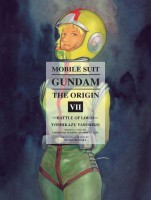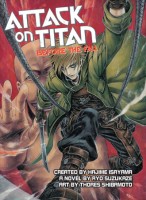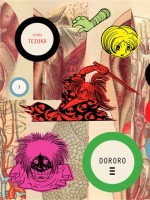 Creator: Fumi Yoshinaga
Creator: Fumi Yoshinaga
U.S. publisher: Vertical
ISBN: 9781939130808
Released: November 2014
Original release: 2011
I have thoroughly been enjoying the English-language release of Fumi Yoshinaga’s manga series What Did You Eat Yesterday?. This probably shouldn’t be too much of a surprise since the series brings together so many of my loves and interests: manga, Fumi Yoshinaga, food, and queer life, just to name a few. What Did You Eat Yesterday?, Volume 5 was originally published in Japan in 2011 while the English translation of the volume was released by Vertical in 2014. Vertical made many fans of Yoshinaga, myself included, very happy when it licensed What Did You Eat Yesterday?, a somewhat niche title, but a series with the potential to appeal to a variety of audiences. Food and handsome gay men are common themes in many of Yoshinaga’s manga and are frequently even found within the same work, which is certainly the case with What Did You Eat Yesterday?. Though not my favorite Yoshinaga manga, it’s still a great series and one that I enjoy.
Food brings people together, sometimes in unanticipated ways. Shiro’s friendship with Kayoko, which started when they decided to split a watermelon that was on sale at the supermarket, has continued to deepen. Though they were once complete strangers, they have now become regular cooking buddies, sharing recipes and food. Her family likes Shiro as well, though at times he’s treated as something of a novelty simply because he’s gay. Kayoko’s husband even makes a point to introduce Shiro to a member of his tennis club, assuming they’ll get along well since Kohinata happens to be gay, too. They actually do, in an odd sort of fashion, and eventually Shiro, Kohinata, and Kenji and Wataru—their respective boyfriends—all end up sharing a meal together. In a roundabout sort of way, it’s thanks to that watermelon that they ever met. Food can help turn acquaintances into friends and can strengthen the existing bonds between family members as traditions are passed along from one person to the next.
One of my favorite chapters in What Did You Eat Yesterday?, Volume 5 was actually when Shiro visited his parents for the New Year holiday. For the most part, What Did You Eat Yesterday? is fairly episodic, although there is ongoing character development. However, Shiro returning home for the New Year celebration is a recurring event in the series which has already happened several times in the manga’s earlier volumes. Generally, there’s also some family drama involved with these visits. Shiro’s parents initially struggled when he came out to them, but it’s marvelously touching to see how much more accepting and even supportive they have become of their son’s homosexuality. There is a really wonderful scene with Shiro and his mother cooking together in the fifth volume of What Did You Eat Yesterday?. Sometimes the series’ focus on food feels completely separated from its story, but here it was a perfect combination, the cooking furthering the characters’ personal growth and connections.
While the food and recipes are prominent parts of What Did You Eat Yesterday?, not to mention some of the reasons that I enjoy the series, the characters and their relationships are just as important to the manga and are what really make it successful as a work. It makes perfect sense to me since I associate family with food, but family relations are a frequent focus in What Did You Eat Yesterday?, especially those between Shiro and his parents as well as those between Shiro and Kenji as they continue to make a life and home together. The fifth volume also reveals more about Kenji’s past and his own unfortunate family situation. What Did You Eat Yesterday? largely tends to follow Shiro and therefore not as much is known about Kenji, so I particularly appreciate when the story turns towards him for a time. Yoshinaga’s characters in What Did You Eat Yesterday?, are believable flawed and complex individuals with histories and subtle depth, making the series particularly gratifying.




